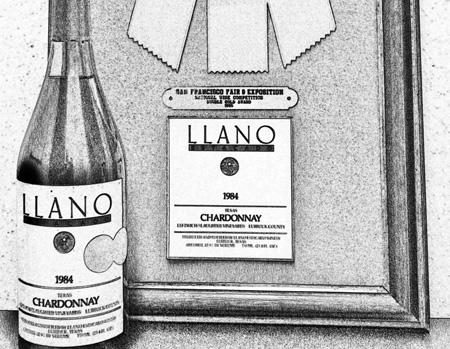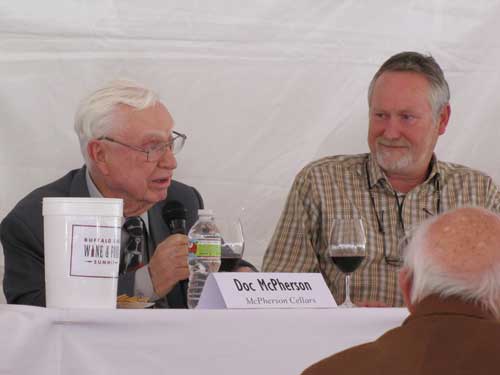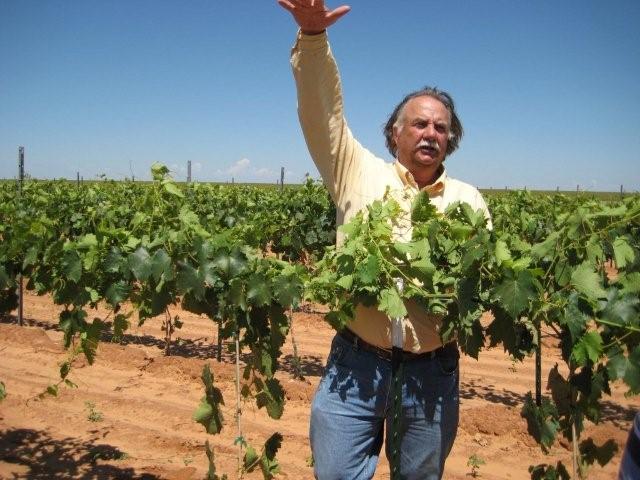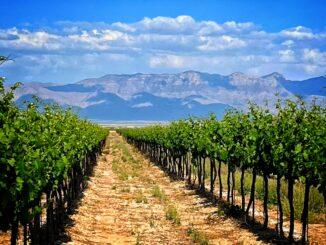
It must have been jubilation for winery owner and winemaker Bobby Cox of Lubbock’s Pheasant Ridge Winery following the 1985 Lone Star State Wine Competition, the winners of which were announced at an awards dinner at the West Galleria Hotel in Houston. The prestigious “Star of Texas” award (equivalent to Best of Show Award) was presented to Cox for his Pheasant Ridge Winery’s 1984 Chardonnay for being the best of all the gold medal-winning wines in the competition.
This award likely held a bit more than its expected fulfillment. It came only a year after when an Austin newspaper writer put in print that it was easier to think that a 280-pound Dallas Cowboys tackle could be a lead dancer in a ballet company than to believe that Texas could make high-quality wines. Part of the insult of this story came as it appeared with a byline… “Chablis with chicken fried steak?”. But, unbeknownst to wine lovers in Texas, along with those in major wine-producing regions everywhere, this wine competition win for Bobby Cox and his Pheasant Ridge Winery was not the pinnacle of Texas winemaking fame.
In 1986, the year after Cox’s big intra-Texas wine win, the highly respected San Francisco Fair National Wine Competition, brought in nearly 2000 entries for judging by wine experts of the time. When the tasting was complete and the judges’ scores tallied, two Texas wineries stood above others from outside of California and shoulder-to-shoulder with some of the most respected wineries of the time including Clos Du Bois, Chateau Souverain, Chalk Hill, Groth, J. Lohr, and Dry Creek.
Llano Estacado Winery placed a double gold medal for its 1984 Texas Chardonnay and a gold medal was bestowed to Pheasant Ridge Winery’s 1983 Texas Cabernet Sauvignon. The only other non-California or -Texas wineries to place were three gold medal-winning wineries from Washington State. There were no wineries placing in double gold or gold medal categories from any other states. These early high medals showed the promise and potential of quality Texas winemaking. The question still remained, however, would Texas live up to this early potential going forward.

Over the past 36 years, literally one vintage-year at a time, and often in the face of Texas’s variable climate, Texas wineries have proven that these early and notable out-of-state wine competition wins were not flukes or due to some one-off occurrence. Since the 1980’s Texas winegrowers and winemakers have learned much about what wine grapes do best in our rugged and sunny climate and in our limestone encrusted soils. They have also incorporated innovative vineyard management methods and varietal selections in their vineyards to handle late Spring freezes and explored the fringes of fermentation science to draw more color and aromas out of their Texas-grown grapes.

In the wine world, it is not what Texas says about its wines that is as important as how others outside our state judge our wines. Dallas-based wine writer Andrew Chalk recently tallied the number of out-of-state medals Texas wines have won by year from 1984 through 2020 (Click here to See Andrew Chalk’s story and more about his graph reproduced below). The positive trend of this graph shows impressive results particularly in the post-2010 period where Texas wineries finally realized that Texas IS the Mediterranean of the USA and started growing more wine grapes native to those warm, sunny regions.

I have also tracked wine competition wins by Texas wineries with a particular focus on double gold medals (those where the wine receives gold medal rating from all judges on their judging panel). In the 2018 and 2019 results from the prestigious and internationally expansive San Francisco Chronicle Wine Competition, Texas wineries brought home a handsome 27 double gold medals. In 2018 alone, four double gold awards from this competition were bestowed upon one Texas winery: Becker Vineyard. Over these two years alone, Haak Vineyards and Winery was awarded four out-of-state double gold medals for their wines made from a French-American hybrid grape – Blanc Du Bois, hardly grown anywhere else in the world but Texas. For more on these double gold-winning Texas wines, wineries, and winemakers, click here.
If you have not already done so, it is time to savor the quality wines produced in our state. Just remember that in most years, Texas isn’t like Bordeaux and it sure as hell ain’t Burgundy. So, it’s time to pour yourself a glass of Texas wine and suck up some of the good old Texas sunshine.



Be the first to comment